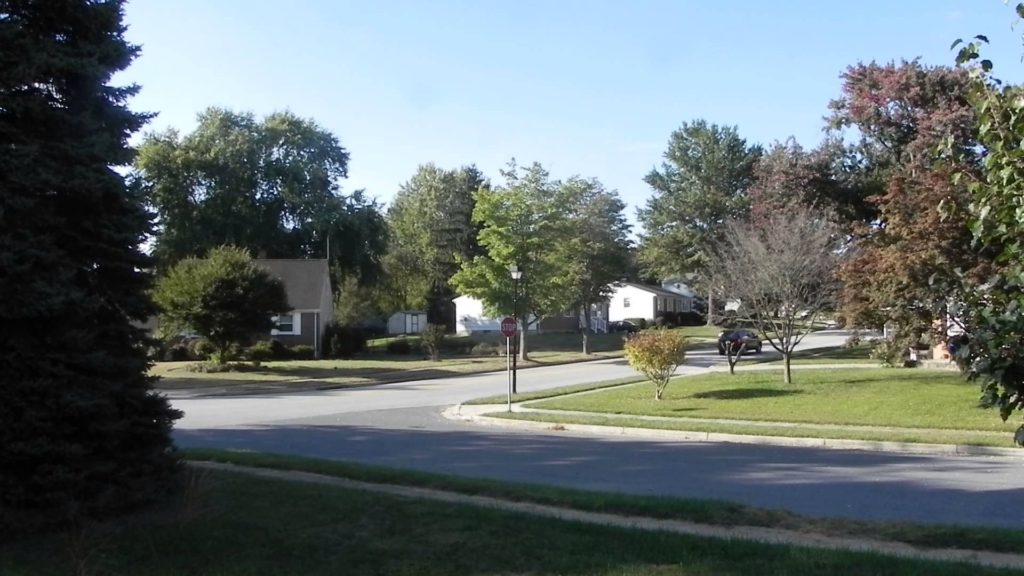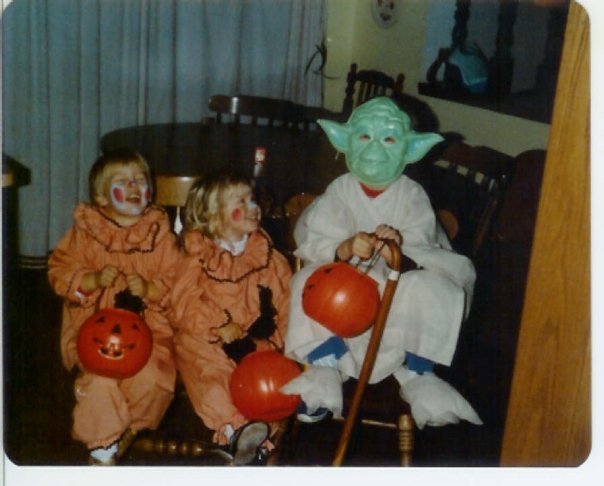…Though Stranger Things Have Occurred
“It is said that what is called the Spirit of an Age is something to which one cannot return. For this reason, although one would like to change today’s world back to the spirit of one hundred years or more ago, it cannot be done.”
From Ghost Dog: The Way of the Samurai (1999); quoting the Hagakure Kikigaki (1709 – 16) by Yamamoto Tsunetomo

I woke up one morning a few weeks back to find my social media feed having somehow taken on the appearance overnight of a page from one of my earliest elementary school yearbooks. Though the faces looked only slightly different as I scrolled over nostalgia-tinged links and through ’80s-themed images, the clothes and hairstyles and settings pictured up and down my feed served to momentarily transport this social media user back to the year “1983” and the magical age of 6 years old. Indeed, upon clicking a 43-second video at the top of the page, the red-block lettering against pitch-black bordering that soon appeared was itself so suggestive to my visual recognition that my ears actually anticipated the eerie strains of synthesizer music as a camera ominously panned across the words “Stranger Things”.
Well, consider my attention distinctly “gotten”. However, the absolute clincher came midway down my feed where three “friends”, of varying levels of acquaintance, had independently shared the image of a worn-and-weathered black-plastic VHS snap-case, of the sort one would have once found on the shelves of a grocery store or on the wire racks of a convenience store, with a faded and very eighties poster featuring big heads and diminishing backgrounds pasted characteristically to the cover. Even a pair of ratty-looking stickers with the codes “D 38” and “D 119” slapped indiscriminately on the sides and edges of the case suggested a level of sociological correctness to my now time-traveling senses that I could just then see a scary punk teenager with a pink spiky pompadour behind the counter at our local Video Station, fruitlessly pulling out huge drawers on rolling metal casters, unable to find the misfiled title from among rows and rows of sheer-black-and-gleaming cassette tapes!
…

I have not seen a single episode of Stranger Things. Nor do I yet have access to what has quickly become the streaming service sensation of the summer. Considering I come from a background where my family held onto our Beta Max until the early 90s, I only just managed to give up my VHS tapes in the late ’00s and am just now, in the 2010s, getting used to DVDs and, to a much lesser extent, Blu-rays. Which means I’ll probably buy a subscription to Netflix some time in the mid-2020s, when most will have long abandoned the internet for various Cloud-related programming. (I will also still communicate by a physical phone instead of the obligatory brain-implanted microchip and will continue to visibly wince when anyone says “literally” when they mean “figuratively”.) So these observations are all very much an outsider’s view of What Everyone Else Is Now Watching.
If I had to imagine, though, I’d say I’m a near smackdab-bullseye for the show’s target demographic: born in the late ’70s, white, male, suburban-raised, with enough hours spent in front of the TV during the mid-eighties to recognize all manner of pop culture trappings from the era and, even more specifically, enough time spent outdoors with a pack of roving kids and indoors with my family at the movies for varied references to The Goonies, Explorers, and Stand By Me to be especially relevant. And from what I gather, the eight episodes of Stranger Things are compelling and well-written enough, as the enthusiasm behind this short piece by Krystal Lyon describing its plot points shows, to have an appeal well-beyond the near-resurrectionary level of cultural and historical detail the show displays. So, in many respects, the praise the show has been earning across multiple media sources appears to be very well earned.

But if you read on, please take the following comments (and those slightly harsher ones below) with a small grain of seasoned salt: I only wish it were that easy. Like the emotional gut punch the meticulously-recreated VHS cover threw my bittersweet memories, there’s a point where more sober reflection on the past reveals the fatal flaw of such reverential reveries. Yes, part of me would very much like to revive and in effect relive even a random day from my childhood, but then I calmly reflect on what I actually thought and felt as a kid and I am left with a wistful, almost deflated feeling of loss in the present and near-despondency for the future. And therein lies the problem of nostalgia: we never remember things as they were. Idealized in hindsight out of all recognizable proportion, the soft-yellow glow the passing of the years gives to some shining moment in the past is as deceptive a glister as the ersatz hue of false gold, or, in my case, the deep-black gleam of hard-plastic surfaces from those analog days of yore!
…

So maybe I’m guilty of over-thinking this whole Stranger Things phenomenon. (Or, out of prejudice for something yet unviewed, even under-thinking.) But for one whose earliest memories seem in retrospect to have been scored by the John Williams of Star Wars and Superman – a kid who, like Elliott in E.T., had Walrus Man, Hammerhead, AND Snaggletooth in his collection of action figures – I think the era the show depicts is possibly too close, and much too personal, for this viewer to fully enjoy in even a very well-done scifi drama. As our sitemaster Jim Tudor pointed out in on-line conversations and in comment threads, I feel I too would find the level of detail – the fact that some song had been released in 1986 and not 1983, trying to identify every early ’80s horror poster on a character’s bedroom wall, wondering whether a walkie-talkie could possibly still receive a signal at such-and-such range – wearying and ultimately distracting. No matter how good the show is, now matter how involving its characters and storylines are, I could never un-see, never so willfully suspend my disbelief into accepting Stranger Things as anything more than a very clever, and possibly very labored, recreation.
Again, though, maybe that’s just me. From Charles Foster Kane’s sled to Roy Batty’s “tears in rain” to Max Fischer’s 2nd grade gift of a typewriter, I fancy the more varied viewing I took up past the undifferentiated pop culture consumption of my extreme youth left me in subsequent years with a somewhat more jaded view of visual nostalgia and its uses. Appealing to some deep emotional need in viewers through reference to a cherished cultural “object” – evincing the desire, perhaps, to recapture a simpler or simply “different” time – strikes me in my darker moments as nothing more than aesthetic paint-by-numbers: a manipulation at best, a lie and a cheat at worst. Disarming any reasonable critical faculty or proper emotional distance, the hypodermic rush of, say, recognizing a tension-filled moment from a John Carpenter movie or a needle-drop of Corey Hart’s Sunglasses at Night or an art-designed boulevard exactly like the street you grew up on feels more like the dubious pleasure of the cultural junky than the appreciation of genuine artistic merit.
But, having here voiced (and exorcised) all my reservations, I’d still watch it. And I might get sucked in, absorbed by the deepening drama, and even momentarily fool myself into thinking, despite all past evidence to the contrary, that blast-from-the-past Winona Ryder is a halfway decent actress. But I wouldn’t trust it. Using Ghost Dog-by way of-the Hagakure once more, “The end is important in all things.” So while the past is never really dead, its trappings and artifices can never, really, truly be recaptured; though I will admit that stranger things have occurred.



